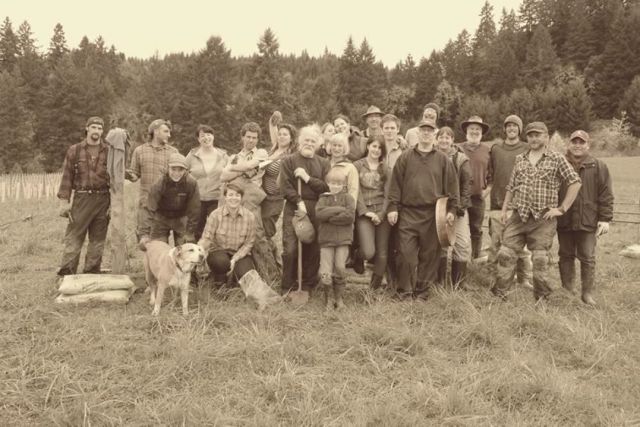19th Century Vineyard Comes Back to Life

Image: Jessica Applegate Brown
What’s left to do in Oregon after you’ve led one of the first wagon trains into the state, built a log cabin and thrown together a provisional government?
Plant a vineyard, of course.
Pioneer Jesse Applegate did just that, more than four decades before Oregon’s acclaimed wine industry began to take shape. Pests eventually decimated his vines, but now, over a century later, his descendent Jessica Applegate is planting grapes once more.
Jesse and his brothers Charles and Lindsay traveled to Oregon in 1843, along with a wagon train of around 1,000 migrants. Upon arriving in Oregon, Applegate was elected delegate to the legislative assembly. He and Lindsay blazed the controversial Applegate trail, a branch of the California trail that turned north through Nevada into the Willamette Valley. Most of the trail was not well marked or cleared. When two hundred people chose the route in 1846, they met heavy rain, Native American attacks and treacherous terrain.
Jesse’s first residence on the Applegate homestead was a log cabin. Between 1852 and 1856, the Applegate House as it stands today came together with local lumber, brick and sandstone. The simple two-story home in Yoncalla Valley sits on the National Register of Historic Places, remaining the oldest home in Oregon owned by the same family since its construction. The Applegate family continues to plant trees and host events at the historic property.
After learning of Jesse’s winemaking exploits—he planted Douglas County's first established vineyard in Yoncalla in 1876—Jessica spent two years thinking about turning the property into a vineyard. “We were looking for a way to carry the house into the future financially,” she said.

Planting day
Image: Daniel Robertson
At one party at the homestead over a year ago, her dream became reality when she met Nathan Wood, a vineyard manager from Napa Valley. Their conversation turned to the intricacies of pioneering a vineyard. How many acres to plant? What vines to use? How far apart to make the rows?
In early April, the Applegates hosted a planting party, where friends, family and volunteers planted half the vineyard in a single day. Now, the land boasts a full 3,100 acres of Albariño and Pinot Noir grapes. It takes three to four years for grapes to mature enough to produce wine, Applegate said, but she hopes to get an Applegate Wine label started before then, using other grapes in the area.
